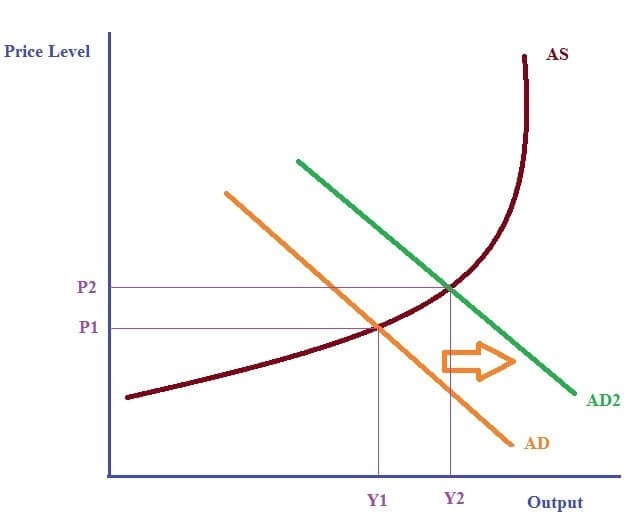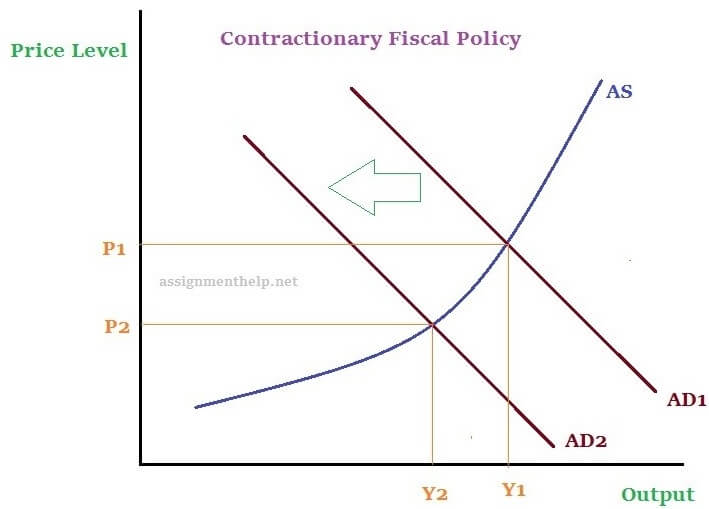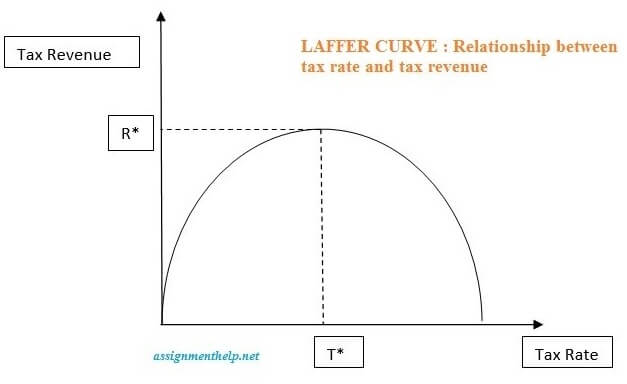Fiscal policy
What is Fiscal Policy?
Fiscal policy is initiated by the legislative and/or the executive branches of government to change the direction of the economy. It is an economic intervention by the government to change the policies that exist in the economy. This can happen through changes in the level of taxation and government purchases in order to stimulate economic activities. The tools of the government are government expenditures i.e. spending of government on public goods and services and taxes. Fiscal policy aims at a stable economic growth and development for the country, full employment equilibrium, stability in prices and balance of payments equilibrium.
The fiscal policy of a country generally focuses on increasing the growth rate of the economy and also keeping the inflation within limits. Fiscal policy affects the aggregate demand through an increase in expenditure or through taxes. Therefore, any change in fiscal policy gets reflected on the aggregate demand curve. The aggregate demand consists of consumption, investment, government spending and net exports. Any change in the components gets reflected on the position and slope of the curve.
AD = GDP = C(Y - T) + I + G + NX
Here, C= consumption Y = income, T = taxes, Y - T = disposable income, I= investment, G= government spending, NX= net exports
Consumption is a function of disposable income and assumes G and T are exogenous. Fiscal policy affects the growth rate of aggregate demand, given a constant growth in aggregate supply. There are two types of fiscal policy: Expansionary and Contractionary.
Expansionary Fiscal Policy
Expansionary fiscal policy is enacted as a response to recessions or employment shocks through an increase in government spending on infrastructure, education, and unemployment benefits etc. This also stabilizes the employment in the economy and helps the economy to move out of the recession. Here, the budget deficit increases. The aggregate demand curve shifts right.
Also, if there is a recessionary gap in the economy i.e. the actual output is less than the potential output at full employment, then an expansionary fiscal policy can help to stimulate demand and shift the AD curve to the right. And this is mainly done through an increase in government spending or cut taxes.
An increase in government spending directly affects the AD curve and on the other side, a cut in taxes will indirectly affect AD curve because consumers will have more money in their pockets after taxes.

Here, the economy is at point-A with Y1 level of output and P1 level of price. An expansionary fiscal policy shifts the AD curve to the right from AD to AD2 resulting in an output increase from Y1 to Y2 and increase in the price level from P1 to P2.
The main rationale behind such policy is that with more government spending and cut in taxes, people will have more money in their hands which lead to more spending and creates demand resulting in business expansion and the creation of more jobs. It helps in restoring consumers and businesses confidence.
When there is higher government spending with lower corporate taxes, then small firms will enjoy greater sales and pay fewer taxes resulting in higher profits. Also, more government spending means more government jobs resulting in more consumers spending. Thus, overall there is more growth.
Limitations of Expansionary Fiscal Policy
- It puts pressure on the budget deficit of the country and increases debt.
- The effectiveness of the policy depends on the timing and accurate forecasting of the policy decision.
- There is an adjustment lag in case of expansionary fiscal policy.
Contractionary Fiscal Policy
Contractionary fiscal policy is enacted when an economy is a state of out-of-control growth causing inflation and asset bubbles. This type of policy is used to reduce government spending and debt of the country. It is just the opposite of expansionary fiscal policy.
Here, there is a reduction in government spending or increase in taxes through which the growth slows down. It generates a more sustainable economy.
If an economy is growing at a faster rate, then the actual output overpowers potential output at full employment level and this creates an inflationary gap in the system. Thus, a contractionary fiscal policy removes that gap and brings back the economy at full employment level. Through decrease in government expenditures and increase in taxes, the budget deficit of the country improves. The main rationale behind this policy is when the inflation is too strong, the pace of the economy needs to slowdown. Therefore, through an increase in taxes, the government takes back the extra money from the hands of the people i.e. decrease in circulation of money.
However, such a policy leads to a sluggish economy with higher unemployment levels. Nonetheless, this process continues because the government focuses to even out the business cycles and have a stable economic growth.
Contractionary fiscal policy decreases the aggregate demand because the decrease in government spending and an increase in taxes results in lesser money for consumers to consume or invest. Thus, the AD curve shifts left.

Here, initially, the economy was at point A with price P1 and output Y1. There is a decrease in government expenditures and/or increase in taxes which decreases the aggregate demand which shifts the AD curve to the left from AD1 to AD2. Now, the equilibrium is established at point B having a lower level of output Y2 and lower price level P2. Thus, when there is very high inflation, the government takes up a contractionary fiscal policy to decrease the price level and have stable growth.
Contractionary fiscal policy is painful for small firms because there is less demand for goods and services. Both corporations and consumers spend less because there is less money injected into the system.
Limitations of Contractionary Fiscal Policy
- Higher tax rates have a negative impact on workers. They lose the incentives to work harder, thus productivity decreases.
- The presence of time lags for adjustment of the new policy.
- Reduced government spending might have an effect on the public goods and services.
Laffer Curve
This curve is a graphical representation of the relationship between tax rates and tax revenues. This curve suggests that the revenues will decline after a certain tax rate.
The horizontal axis shows the tax rate and the vertical axis shows the revenue collected from taxes which go to the government. This curve shows the trade-off which government needs to decide between tax rate and tax revenue. The Laffer curve depicts two type of relationship. First, arithmetic i.e. when the tax rate increases, more revenue will be collected but this happens only till the peak tax rate which maximizes the revenue (T*). Second, economic i.e. tax rates increasing after a certain point (T*) would cause people not to work as hard or not at all because of no incentive is left to work thereby reducing tax revenue. Eventually, if tax rates reached 100%, shown to the far right on this curve, all people would choose not to work because everything they earn will go to the government and nothing will be left with them. Thus, 0% tax rate and 100% generates no revenue at all. The economic effects recognize the positive impact of lower tax rates on work, output, and employment because it provides incentives to increase these activities. However, higher tax rates penalize people for engaging in these activities.

Thus, Laffer curve does not say whether a tax cut will raise or lower revenues, nor it says that any and all tax rate reductions would necessarily bring in total revenues but it tells us that tax rate reductions will always result in a smaller loss in revenues. This means that the higher the starting tax rate, the more effect it will have on the supply-side stimulus. It can be concluded that tax rate cuts will generate growth, jobs and income for all which is desirable for the economy.
Therefore, the government needs to know that optimal tax rate (T*) which will maximize the revenue and also people will continue to work hard.

Secondary Effects of Fiscal Policy
Fiscal policy has some effects on the credit market too. Firstly, when the government takes up an expansionary fiscal policy, deficit increases and to finance it, the government borrows funds, thus, debt increases. However, the money supply is constant, as the amount of borrowed funds increases, money left in the economy for circulation decreases, therefore the interest rates increases. Due to this, investment demand decreases because now the interest rate on loans which are used for investment purposes increases. This effect is called crowding-out effect because an expansionary fiscal policy raises the aggregate demand for the economy but at the same time it crowds out or reduces aggregate investment expenditures and consumption expenditures because these are interest sensitive.
Secondly, similar things happen in the case of contractionary fiscal policy but just in the opposite direction. In the case of a restrictive policy, the government spending decreases budget surplus increase which implies borrowings are reduced. Thus, the supply of available funds in the credit market increases causing the interest rate to fall. Here, there is an overall decline in the aggregate demand but at the same time due to the fall in interest rates, the demand for investment expenditures in private sector and consumption expenditures is stimulated. This is called as a crowding-in effect.
Thus, these effects mitigate the effectiveness of the parent policy and counteract to the shift in aggregate demand curves.
Fiscal Policy and Unemployment
According to Keynesian view, expansionary fiscal policy can be effective in reducing unemployment because as the aggregate demand increases, the demand for jobs increases to produce more output. However, classical view is against this. They argue that fiscal policy only reduces cyclical unemployment because in the long-run, economy will return to its full employment level and an expansionary fiscal policy just causes inflation
Fiscal policy cannot solve the unemployment problem because there exists frictional and structural unemployment and fiscal policy may not be able to solve such problems. Here, in such types of unemployment, the main reason is a lack of skills and training which cannot be solved by a country’s fiscal policy.
Click here to learn how government conducts fiscal policy through taxes
Get instant Macroeconomics homework help with the Best Economics Tutors


